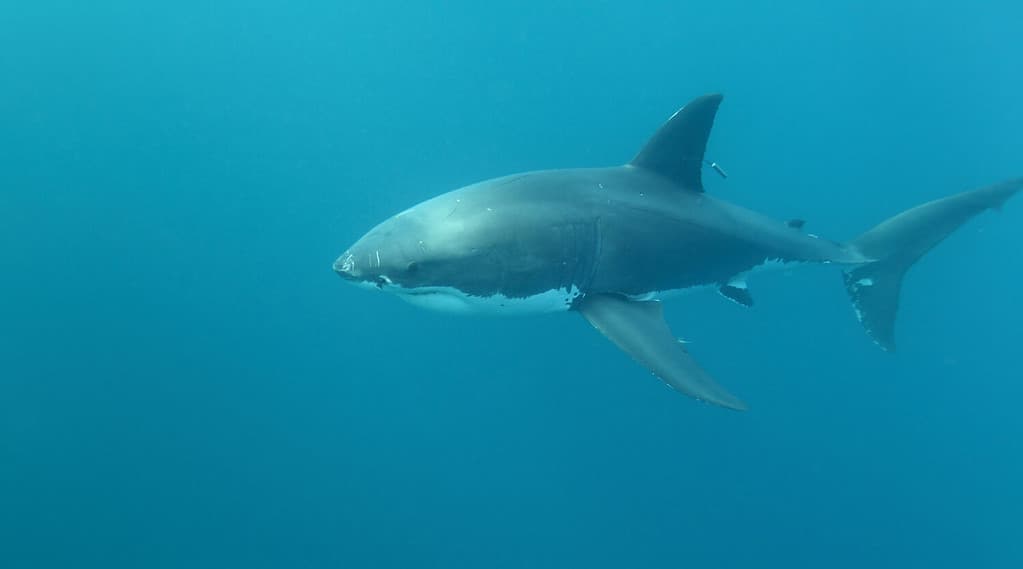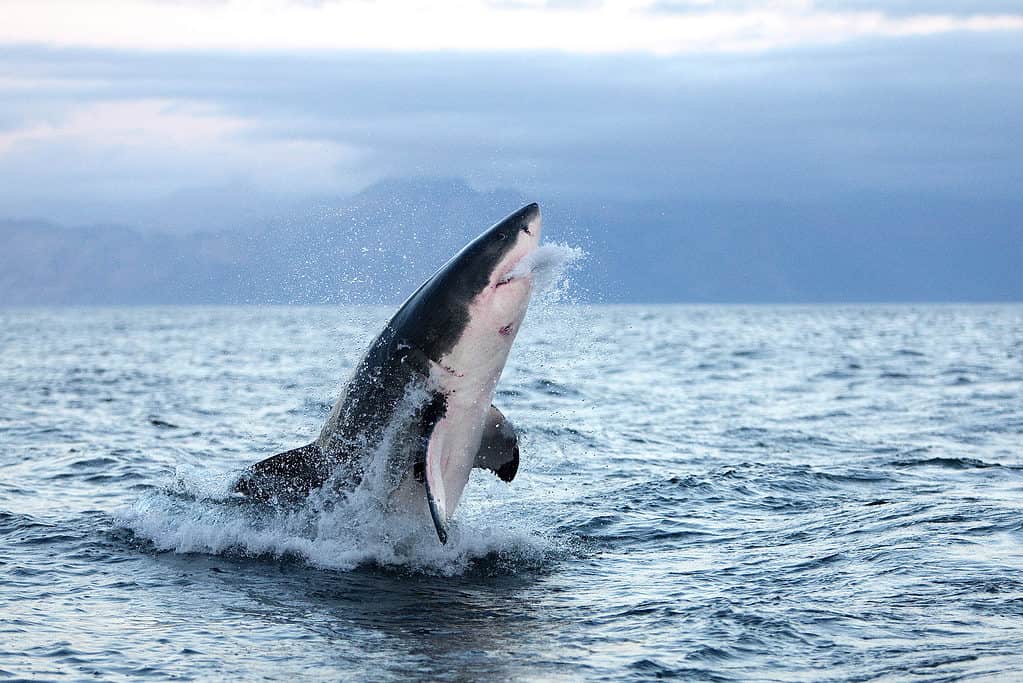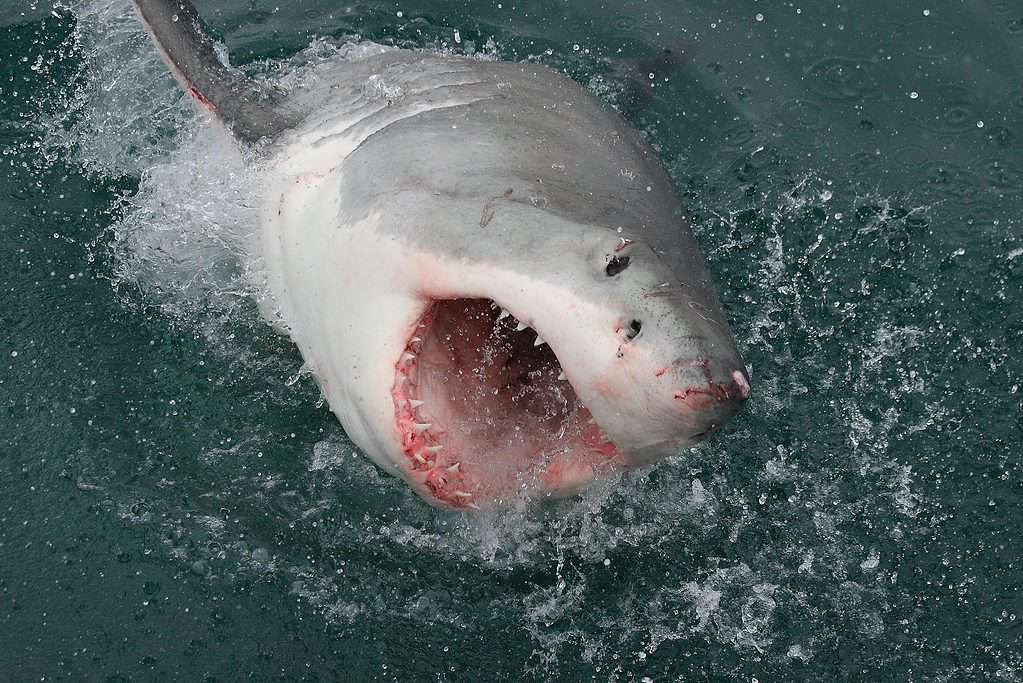Continue reading for our analysis...

You can almost imagine the Jaws theme music as you watch this clip of a bunch of guys in a boat being harassed by a shark. What you actually hear, is a lot of screaming and shouting. And a lot of beeps to disguise what they are saying! In the below clip, we get to see just how terrifying and exhilarating it is to be this close to an apex predator of the ocean.
Where Do Great White Sharks Live?

Great white sharks are concentrated in ocean waters near Australia/New Zealand, South
Africa
, and the North Atlantic and Northeastern Pacific oceans.
©Alessandro De Maddalena/Shutterstock.com
Great white sharks are members of the Carcharodon genus and are found in oceans all over the world. Their population is concentrated, however, near Australia/New Zealand, South Africa, and around the North Atlantic, and Northeastern Pacific.
There are some populations around Japan and in the Mediterranean. To encounter great white sharks off the US west coast, you need to be in the waters of California. However, these sharks also make long migrations to an area called the Pacific Gyre – also called the “white shark café”. It’s an area of circular ocean currents. It’s formed by a combination of the Earth’s wind patterns and the rotation of the planet.
How Large Do Great White Sharks Get?

On average, females measure around 15-16 feet, while males typically reach 11-13 feet.
©slowmotiongli/Shutterstock.com
The typical size of the great white shark (Carcharodon carcharias) ranges up to 20 feet in length for the largest individuals, although many are smaller. On average, females measure around 15-16 feet, while males typically reach 11-13 feet. Further details about the great white shark can be explored in our comprehensive overview.
The largest known great white shark was a massive female named “Deep Blue.” This incredible shark measured more than 20 feet in length and weighed around 2.5 tons. Beyond her size, Deep Blue was fascinating for her interesting ways of hunting, how she found mates, and how she moved from place to place.
Is This Normal Behavior for Great White Sharks?

Great white sharks have a fantastic sense of smell.
©Alessandro De Maddalena/Shutterstock.com
It looks as if the guys on this boat have tried to attract the shark by placing a fish in the water. It is not unusual for sharks to be attracted to fish! They have a highly acute sense of smell, and it will not bother them that the fish is dead. In fact, sharks often target dying or dead prey because they don’t have to put so much effort into catching it!
Sharks can smell blood from hundreds of feet away. They can detect concentrations as low as one part per 25 million and possibly up to one part per 10 billion, depending on the chemical.
These guys have two nares (nasal cavities) located just under their snouts. Each of the nares has two openings so that water can flow in one and out of the other. Inside are skin folds covered in sensory cells. They detect the chemicals in the water and send messages to the brains, which interpret it as ‘fish nearby’!
Thank you for reading! Have some feedback for us? Contact the AZ Animals editorial team.






